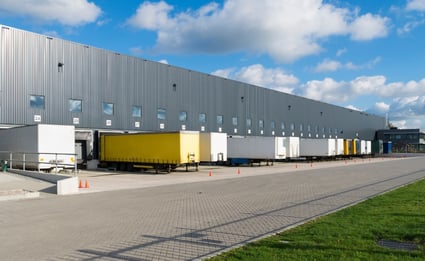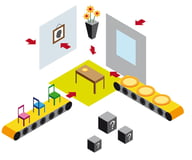Production Scheduling 101: Tackling the Job Shop Problem
Brian Hoey - July 31, 2018

Any production planner who has spent time working on non-clocked production processes can tell you that it presents challenges and hurdles that simply don’t exist on assembly lines or in other linear production processes. And yet, for some manufacturing outfits, non-timed production is the best way to maximize their machine and personnel resources while maintaining a relatively flexible and adaptable production environment. How do we reconcile the difficulty of scheduling production in a job shop with the obvious value that it presents for many businesses, and what can that tell us about the future of job shop scheduling?
The Job Shop Problem
First things first, what’s so difficult about non-timed production planning, i.e. job shop scheduling? Simply put, the fact that there is no set order that each product takes from one machine to the next means that it is difficult to find the quickest route through the factory for any given part or to the find the most efficient way to produce multiple different parts with multiple different processes. Unlike on an assembly line, there is no group of machines that will always be used in the same sequence and each production process will have its own rules and logic to be determined on a case by case basis. Not only does this mean that optimizing resource usage for the entire job shop is a mathematically complex task, it means that responding to disruptions is difficult or impossible to do in an agile manner. As a result, businesses often have trouble recovering from unforeseen supply chain events in a way that retains value.
Traditionally, non-timed production scheduling has been done by hand or, more recently, in an Excel spreadsheet. In both of these cases, the vast complexity of the task can rarely be adequately dealt with. Due to the low visibility of these types of pen and paper planning workflows, they also rarely present planners with the transparency necessary to perform replannings quickly and efficiently. Rather than being able to modify existing structure of resource and machine usage, many plans will have to be rethought from scratch at the first sign of a disruption.
Industry 4.0 Integration
While the era of pen and ink planning for non-clocked production has certainly not come to a close universally, the rise of digitization and Industry 4.0 systems in the modern factory environment has given production planners new tools for their job shop scheduling arsenals. Increased digitization, and specifically the creation of digital twins (i.e. digital copies of a given factory or production line that can be used to run simulations and create prediction), can help give planners a clearer picture of their existing resources and their current resource usage, making it easier to uncover areas where they might be hitting snags or laying the groundwork for future bottlenecks. By the same token, Industry 4.0’s prioritization of machine-to-machine communication can help to improve data collection efforts, creating a stream of mission critical information about machine and personnel usage that planners can leverage into value-added optimization propositions.
In addition to boosting the availability and quality of a given organization’s production data, digitization can help to integrate job shop production into larger workflows. Where, previously, the complexities of non-timed production added a degree of difficulty for integration with transport logistics and inventory management, Industry 4.0 systems present new opportunities for creating larger, more holistic workflows that incorporate non-clocked production, helping to smooth out delivery and routing processes. By the same token, a more digitized production environment will lend itself more easily to analytics integration. While this can certainly be beneficial to more linear production lines, it’s especially impactful in job shop settings, because they can help to cut through an already-high level of complexity.
Discovering New Efficiencies
At this point you may be wondering what the practical effect of all of this Industry 4.0 integration will be? Broadly speaking, it will help to bring job shop scheduling in line with other modern, digitized processes, making the entire workflow more agile and efficient while creating synergy with touchpoints further along the value stream. More specifically, the new era in digital manufacturing will help to create new workflows in which sophisticated planning software can find the optimal job shop production plan for any given set of restrictions and requirements. Not only will this save countless person-hours, it will also ensure that the plan remains visible and transparent throughout its lifecycle. From there, simulated disruptions can be used to create optimal planning alternatives for use in the case of actual breakdowns or bottlenecks—again maintaining a high degree of visibility. In this way, modern manufacturers can turn job shop scheduling from a liability into a value added proposition.
If you want to learn more get your Guide to Industry 4.0:
LATEST POSTS
- Understand Circular Economy in The Manufacturing Industry
- How Can Industry 4.0 IT Integration Be Achieved Smoothly?
- The Significance of Order Sequencing in Discrete Manufacturing
- How to improve your Supply Chain Management: The Power of Control Towers
- Optimizing Human Resource Scheduling in Manufacturing: A Technological Approach



